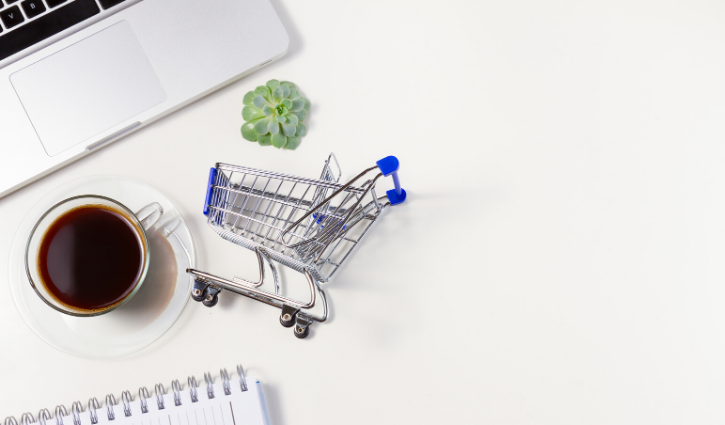The necessity of responding to COVID-19 pandemic has caused radical shifts in the economy – both for industries whose operations who have been impacted, and for industries who have to radically rethink consumer demand. And perhaps no industry has been more impacted in the immediate term than Retail – an industry which was already in upheaval with the rise of eCommerce, Amazon and other rapid changes in technology and consumer behaviour.
Now, social distancing measures to respond to COVID-19 have forced retailers to adapt even faster. Many stores have been forced to close, faced with rapidly scaling up their eCommerce and delivery options at the same time that they contemplate the ways that this pandemic will impact consumer behaviour going forward. For years, transformation has been the word in retail. But in this new landscape, it’s no longer just a matter of talking: retailers who are unable to adapt fast and strategically will face extinction.


Recently, we featured a rapid response article from Retail Transformation Executive Gary Newbury and Supply Chain expert John McClymont. This week, we caught up with Gary in particular for a closer look at his forecasts for the Retail industry, from the perspective of both consumer behaviour and Supply Chain transformation.
Gary is a Retail Supply Chain Strategist and Serial Transformation Executive with an extensive track record of boosting Supply Chain agility for some of the biggest brands in the UK and Canada. He’s a deeply strategic Supply Chain thinker, with deep understanding of challenges and opportunities in the Retail space.
As a transformation expert in a time of necessary rapid transformation, Gary is an excellent person to speak with about trends and how companies respond. He has formed a working group with some of the industry’s leaders in Canada to identify the immediate impacts, so we were thrilled that he’s sharing his insights with the Argentus readership.
We spoke about:
- What retail leaders are seeing on the ground, both in terms of consumer behaviour and operational changes.
- The pressure faced by retailers in a time of increased demand for certain consumer products.
- The way that retailers can respond, in the short, medium and long term – and how this dovetails with opportunities for larger transformations that will make them more nimble and competitive in the future.
We hope you enjoy the interview!
Thanks for taking the time to do this interview, Gary! Obviously Retail Supply Chains are dealing with unprecedented challenges right now. Some companies have been forced to close brick and mortar and accelerate their eCommerce efforts, and others – mainly in the grocery industry – are dealing with an unprecedented surge in demand. What are you seeing on the ground from your conversations with retail leaders?
That’s a great question, and there are so many layers to unpick within this question. I’ll attempt to address this by looking at current trends with consumers and retailers.
There are five key factors which are going to weigh heavily on consumers in particular:
- The length of the period of self-isolation.
- How much money consumers will have after this period.
- Their exposure directly (impacting on family or friends) or indirectly (through media messaging) to COVID-19.
- Impacts to their sense of abundance.
- Their likelihood of return to the same employer who displaced them.
I believe we are experiencing an episodic discontinuity, one which will alter consumer perceptions of shopping and value. The further we extend the lockdown, and any secondary wave of advisories, the deeper the impacts will be.
For retailers, those without a viable online service no longer have a source of revenue and will be at the mercy of policymakers. The 1st of April was a critical day for most retailers as their quarterly property rentals were due and the landlords didn’t look like they were moving on expecting to collect the dues.
Retailers remaining open are flat out trying to keep shelves full without any obvious reduction in SKUs, which means the randomised demand across staples are probably continuing to disturb previous very comfortably managed replenishment routines. This is causing much firefighting, long hours and worry as to whether suppliers can produce in time to bring the inventory in and catch the truck to get it to the store. There is much internal pressure on all aspects of the “real” supply chain, not just the physicality of warehousing and transportation.
Retailers who have closed are making very tough choices about their staff and many are aware that any poor or disrespectful behaviour now will likely come back to bite them later. Some are not so mindful.
Those with online (“Click and Collect”) services are likely seeing their processes, technology and people coming under significant pressure as high demand builds and the retailer is now performing the “shopping,” rather than the consumer. The challenge remains: if you take your retail banner temporarily into a purely online model and your service is not great during this period, you risk doing real harm to your brand. Although many consumers will cut you some slack if you are trying to get up and running, executives need to understand they are putting their banner’s loyalty “on the line.”
There is a golden opportunity for Canadian “non-essential” retailers to get on the front foot for the next month or so. The reason is Amazon is projecting current orders out by at least a month. Simply put, they have moved Prime from next day to next month! Given this there is an opportunity for retailers to really crack the code on “Click and collect” at scale. They have the whole store to work with (as they are closed to the public) and their stock is stationary and so is more accurate than it has ever been. All they need to do (assuming the technology works) is to work on the process for repeatability at scale and then compress the space/labour required prior to reopening. The additional benefit is that the store can actuallyfully engage in developing the solution which will work when the store reopens. Often “eComm” has been under the auspices of the Digital team and not the store network. Yes, more silos!
From a retailer’s point of view, they will have to do much research to discover consumer behavioural changes to be able to adapt to the new normal. Those retailers who can get on the front foot during this process will need to educate consumers, much the same as Amazon have been leading consumers to what “good retail looks like.”
You’ve been working with a group of retail leaders to identify the challenges and how to respond – both right now, with these immediate changes, and in the future, which is still uncertain at this moment. Could you give us a high-level overview of your impressions of the changes that retailers will have to respond to in the short, medium and long term?
This work has been inspirational. In early March, I began asking myself, “what does a retail supply chain of the future look like in the light of the fundamental disruption of COVID-19? Does it pose real challenges to the design of extended supply chains that have been established over the last 20-30 years?” I thought some further context would be helpful. I reached out to 5-6 Canadian retail strategy thought leaders to gain their insights about what changes are in front of us over the next 12 months and then worked back from there. As we worked frantically through a series of questions I posed them, a pattern of the next major steps started to emerge.
These developed into three key areas, two of which are likely to run in parallel:
“Just Do It” – Prioritise the immediate needs. The prime directive is “keep shelves full” or get “Click and Collect” up and running at scale. This stage is all about the firefight to drive product into the retail distribution networks and out as quickly as possible to stores. It also involves initiating the first “sense check” of consumer behaviours and “what does this mean for stock we currently have in our distribution network?”. We may have to consider a special deep markdown clearance program through the reinvention process.
“Transform Quickly and Boldly” – The COVID-19 supply chain disruption has surfaced many, many weaknesses with how we have approached scalability in Supply Chain design and operation. A cold, hard objective review of what we have been doing, and the risks and weaknesses currently exposed, will form the basis of a business model change. We clearly need new tools, maybe large-scale innovation in supply chain design to build both agility AND resilience as we create value for consumers and work to defend ourselves against this level of disruption to business and social norms. This stage will roadmap and develop supply chain capabilities to apply in time for when we are expected to reopen. Retailers need to be bold and act quickly, or they will fail to equip themselves.
“Disband the Old and Adapt” – Here the latest consumer behaviour research will inform how to adapt the capabilities created through the transformative stage. I have less clarity on this stage as so many factors are in play, some of which I have raised during our conversation already. Anyone of them could have a dramatic impact on how consumers make sense of their new world.
A big thanks to Gary Newbury for taking the time to do this interview! Stay tuned for more interviews with Gary and others about the way Supply Chains are adapting to this new era. ![]()




0 Comments